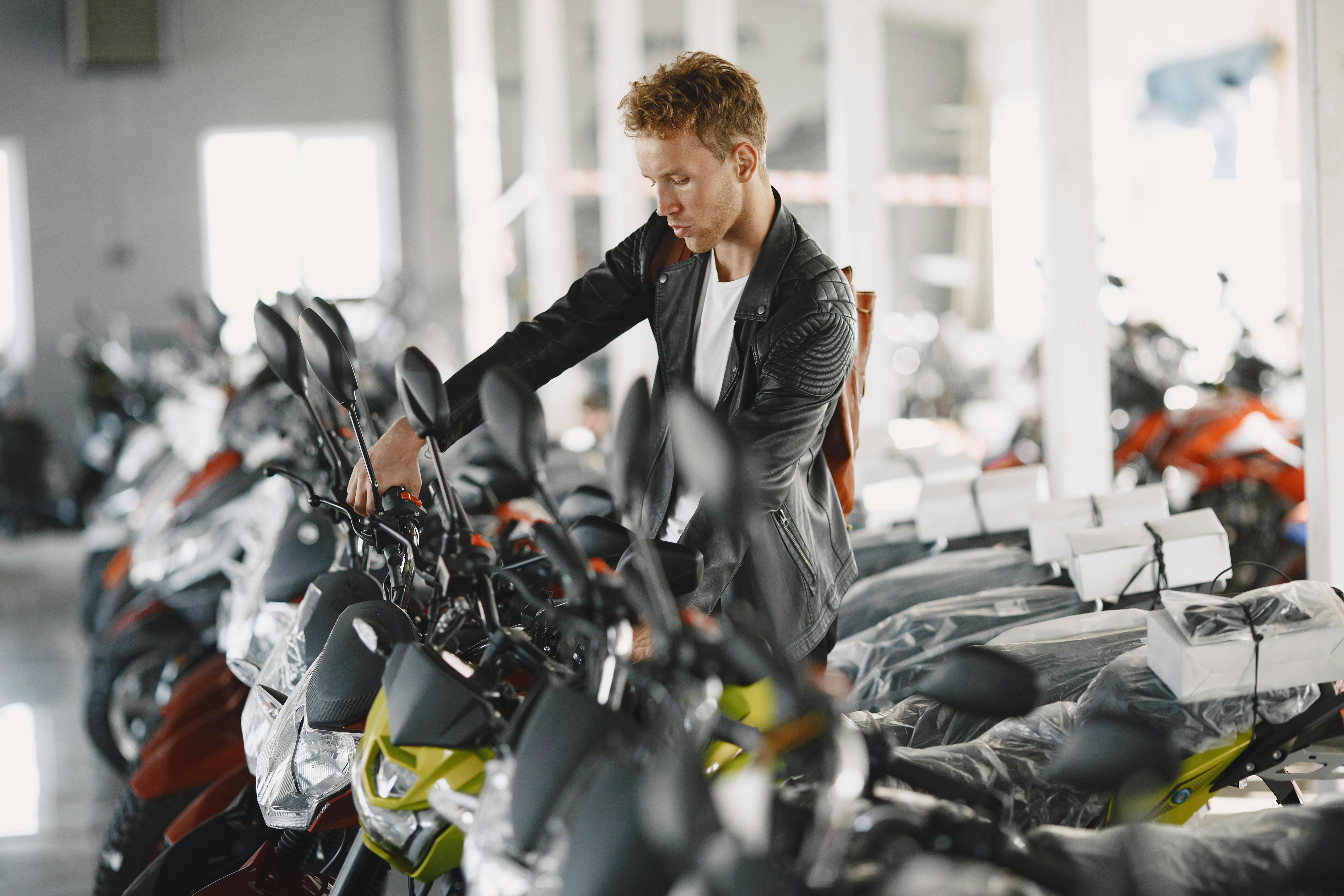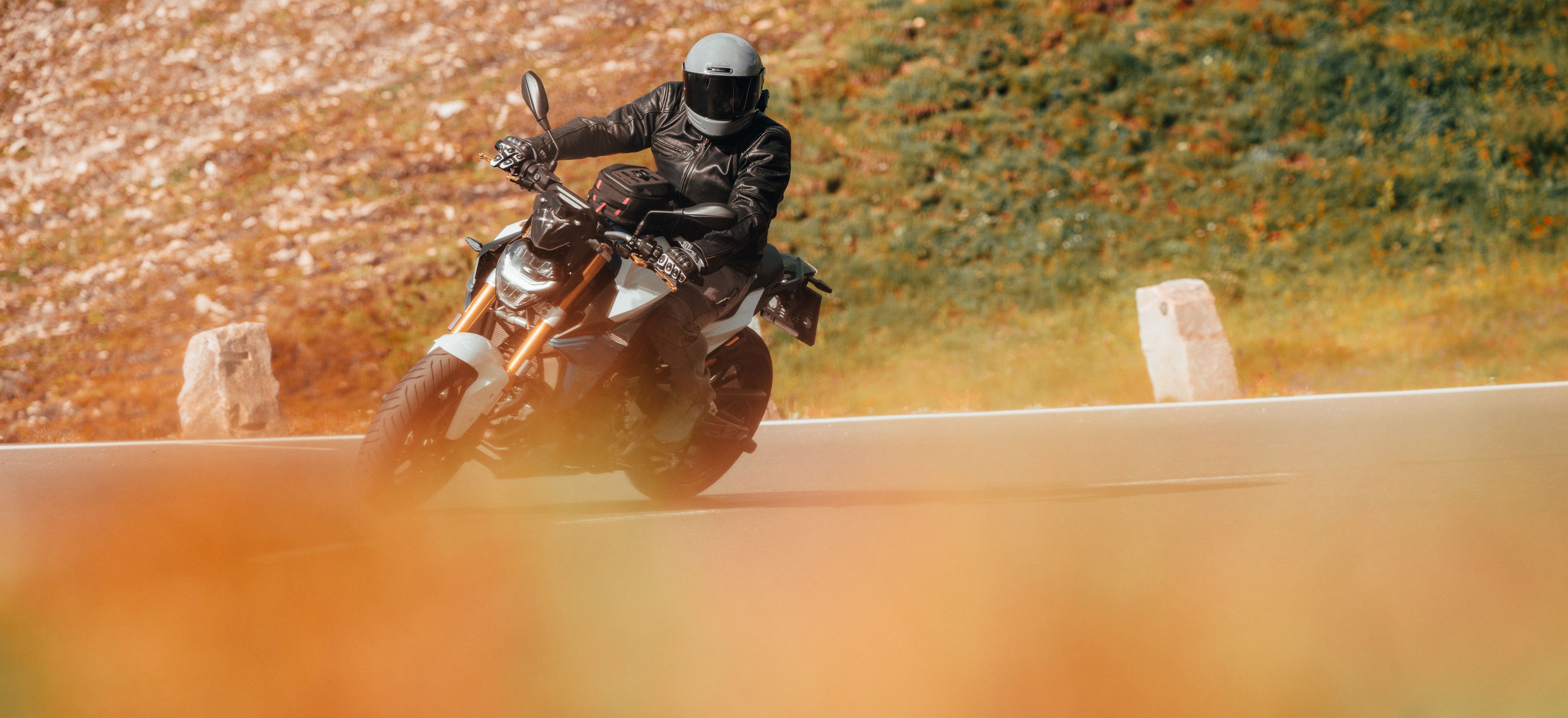
Which Motorcycle Is Right for Me? Key Criteria at a Glance
The range of motorcycles out there is huge – from sporty naked bikes and comfy touring machines to off-road-ready enduros. But which one truly suits you? There’s no one-size-fits-all answer. In addition to personal taste, important factors like height, riding experience, license type, and riding style all play a major role. This guide will help you figure out which motorcycle is the right fit.
Height and Ergonomics: Does the Bike Fit You?
Not every bike suits every rider’s height. Seat height is one of the most important factors. If you can’t put both feet flat on the ground when stopping, you’ll likely feel unstable. On the flip side, a bike that’s too small can be uncomfortable for taller riders.
- For shorter riders under 5'7" (1.70 m), look for seat heights under 31.5 inches (80 cm). Good categories include scramblers, cruisers, or compact naked bikes. Example models: Honda Rebel 500, Kawasaki Z400, BMW G 310 R
- For taller riders over 6'1" (1.85 m), a higher seat is better for maintaining a natural knee angle. Great choices include adventure bikes, large touring models, or dual-sport bikes like the BMW GS series, KTM 890 Adventure, or Yamaha Ténéré 700.
Tip: Always sit on a bike before buying to make sure the position and ergonomics are comfortable for you.
License Type: What Are You Legally Allowed to Ride?
What you can ride legally depends on your motorcycle license class. Here’s a quick overview of the main types commonly used in Europe:
Class A1: Light motorcycles up to 125 cc and max 15 hp
Class A2: Motorcycles up to 48 hp (35 kW), including restricted (detuned) models
Class A: All motorcycles with no power limit
If you're not sure which bikes you're licensed to ride, it's worth checking the exact details of your license. A full overview of motorcycle classes can help clear things up.
👉 Note:
Motorcycle license classes vary by country:
In Europe, the A1–A2–A system is standardized under EU law.
In North America, license classes differ by state or province. Typically, you’ll have to pass a written test and a riding skills test, with fewer tiered classes. Terms like M1/M2 (in Canada) or Class M (in the US) are common.
In Australia, licensing also depends on the state. Riders usually start with an L (Learner) permit, followed by RE (restricted) and R (unrestricted) licenses, which roughly correspond to A2 and A in Europe. Learn more here.

Riding Style: What Type of Motorcycle Fits You Best?
Your riding style plays a major role in finding the right type of bike. Whether you ride sporty, relaxed, urban, or adventurous, there’s a category that fits your vibe.
Touring Bikes
Perfect for long-distance rides, weekend getaways, or full-on road trips. Touring bikes offer lots of comfort, wind protection, luggage options, and a relaxed upright seating position.
Examples: Honda NT1100, BMW R 1250 RT, Yamaha Tracer 9 GT
City Riders
If you're mostly riding in urban traffic or on short commutes, go for something light and nimble. These bikes are easy to handle, fuel-efficient, and usually more affordable.
Examples: KTM Duke 390, Yamaha MT-07, Brixton Cromwell 125
Adventure Riders
If you love venturing off the beaten path – gravel, dirt, or long off-road stretches – you’ll want a rugged bike with long suspension travel, good ground clearance, and optional luggage setups.
Examples: Yamaha Ténéré 700, Honda CRF300L, KTM 890 Adventure R
Sport Riders
If you’re looking for power and precise handling, supersport bikes and performance-oriented naked bikes are a great match. These machines are designed for speed, agility, and a dynamic riding experience.
Examples: Yamaha R7, Aprilia RS 660, Triumph Street Triple RS
The better you understand your riding style, the easier it is to choose the motorcycle that truly fits you.

Riding knowledge and experience: Make a Realistic Assessment
Not every motorcycle is suitable for every rider, especially when it comes to power and weight. High-performance or heavy bikes require solid technique and confident handling.
Key Questions to Ask Yourself:
- How confident do you feel when maneuvering or riding at low speeds?
- Are you comfortable performing emergency stops and evasive maneuvers?
- How many miles have you ridden so far?
If you’re just starting out, it’s best to choose a lightweight, easy-to-control bike. Beginner-friendly naked bikes or small enduros tend to be more forgiving of mistakes.
Examples: Honda CB500F, Suzuki SV650, Kawasaki KLX230
Bike Weight: How Heavy Is Too Heavy?
A motorcycle’s weight has a big impact on how it handles – especially at low speeds, while parking, or when maneuvering in tight spaces.
Lightweight bikes (under 400 lbs / 180 kg):
Great for beginners or shorter riders. These bikes are easy to manage and help you build confidence quickly.
Examples: Yamaha MT-125, KTM Duke 390, Honda CB300R
Midweight bikes (400–485 lbs / 180–220 kg):
A balanced mix of stability and agility. Ideal for riders with some experience who want a bit more versatility.
Examples: Kawasaki Z650, Yamaha XSR700, Suzuki V-Strom 650
Heavyweight bikes (over 485 lbs / 220 kg):
Known for comfort and premium features, but they demand more skill – especially in city traffic or on loose terrain.
Examples: BMW R 1250 GS, Harley-Davidson Street Glide, Honda Africa Twin
When buying a bike, don’t underestimate the importance of weight. A "weaker" bike with better balance and lower weight can often be easier and more enjoyable to ride than a powerful but bulky machine.